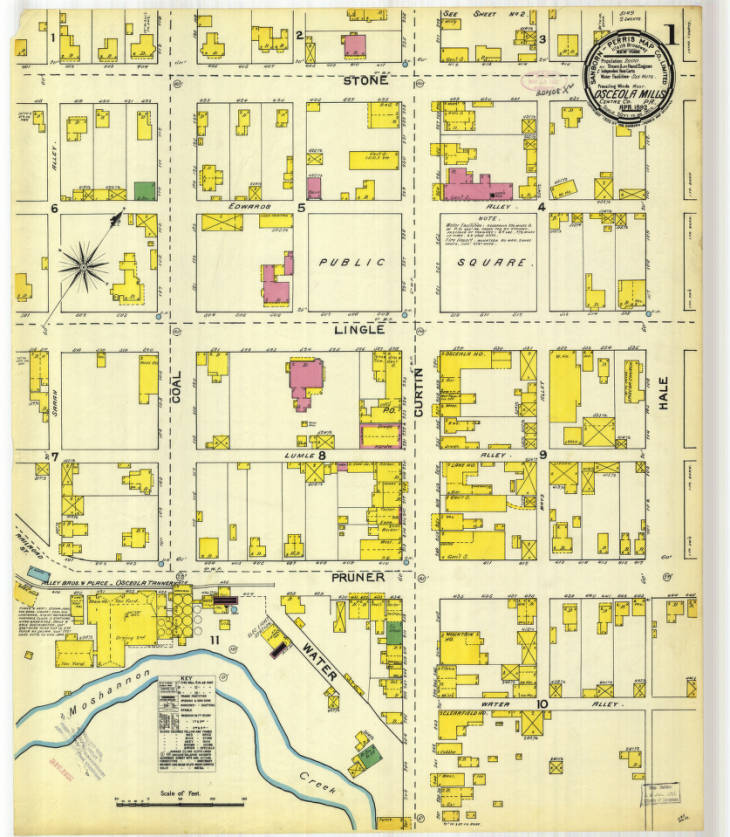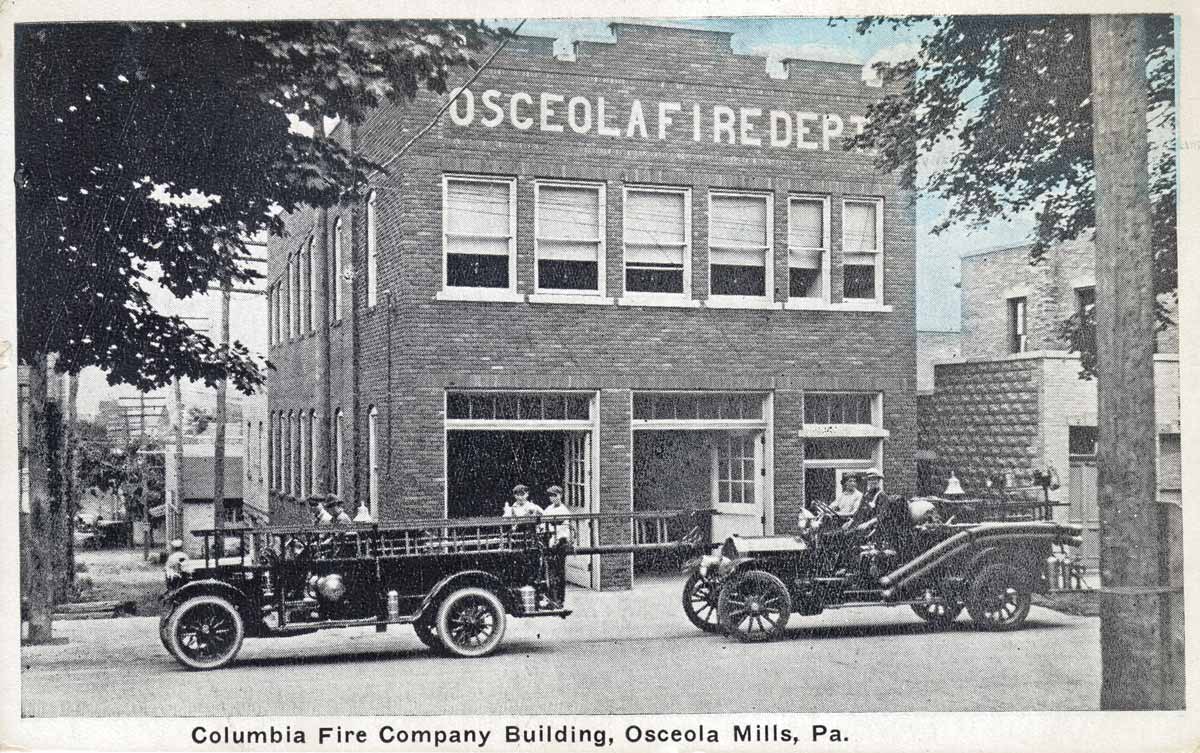.jpg)
.jpg)
TWENTIETH CENTURY HISTORY OF CLEARFIELD COUNTY PENNSYLVANIA AND REPRESENTATIVE CITIZENS by Roland D. Swoope, Jr. Chicago, Ill., Richmond-Arnold Publishing Company, 1911
CHAPTER XIV.
HISTORY OF OSCEOLA MILLS BOROUGH.
Osceola Mills was laid out in 1857 and was incorporated as a borough in 1864. It is located on the banks of the Moshannon Creek, four miles south of Philipsburg, and six miles east of Houtzdale. The town faces towards the south and is at the foot of the heavy mountain grade on the Tyrone & Clearfield Railroad. It is the junction of the Moshannon Branch Railroad with the Tyrone & Clearfield Railroad. The Tyrone & Clearfield Railroad was extended to the town in 1863, but was not opened for business until January 1, 1864. The railroad station of the Tyrone & Clearfield Railroad is in Centre county, the Moshannon Creek being the line between the counties of Centre and Clearfield.
On May 20, 1875, the town was almost wholly destroyed by fire. One and one- half million dollars worth of property was burned up and nearly all of the inhabitants were rendered homeless. With the aid of contributions by other communities and their own energy, the people of Osceola Mills soon recovered from the effects of this conflagration and on the ruins left by the fire there sprang a new town more beautiful than the old one.
The town has five churches, a weekly newspaper, a national bank, paved streets and electric lights. The industries consist of two foundaries and machine shops, planing-mills and many other smaller industries. There are about fifteen coal operations in the vicinity of Osceola Mills and on account of its situation at the junction of the Moshannon Branch with the main line of the Tyrone & Clearfield Railroad a large railroad yard is located near the town, giving employment to many of the inhabitants of the place.
The Altoona & Philipsburg Connecting Railroad also passes through the town and connects at Philipsburg with the Beech Creek Railroad.
Osceola Mills is a thriving and progressive town and has a population of about two thousand.

Osceola Mills Sanborn Map, 1892

1920 Osceloa Mills Fire House